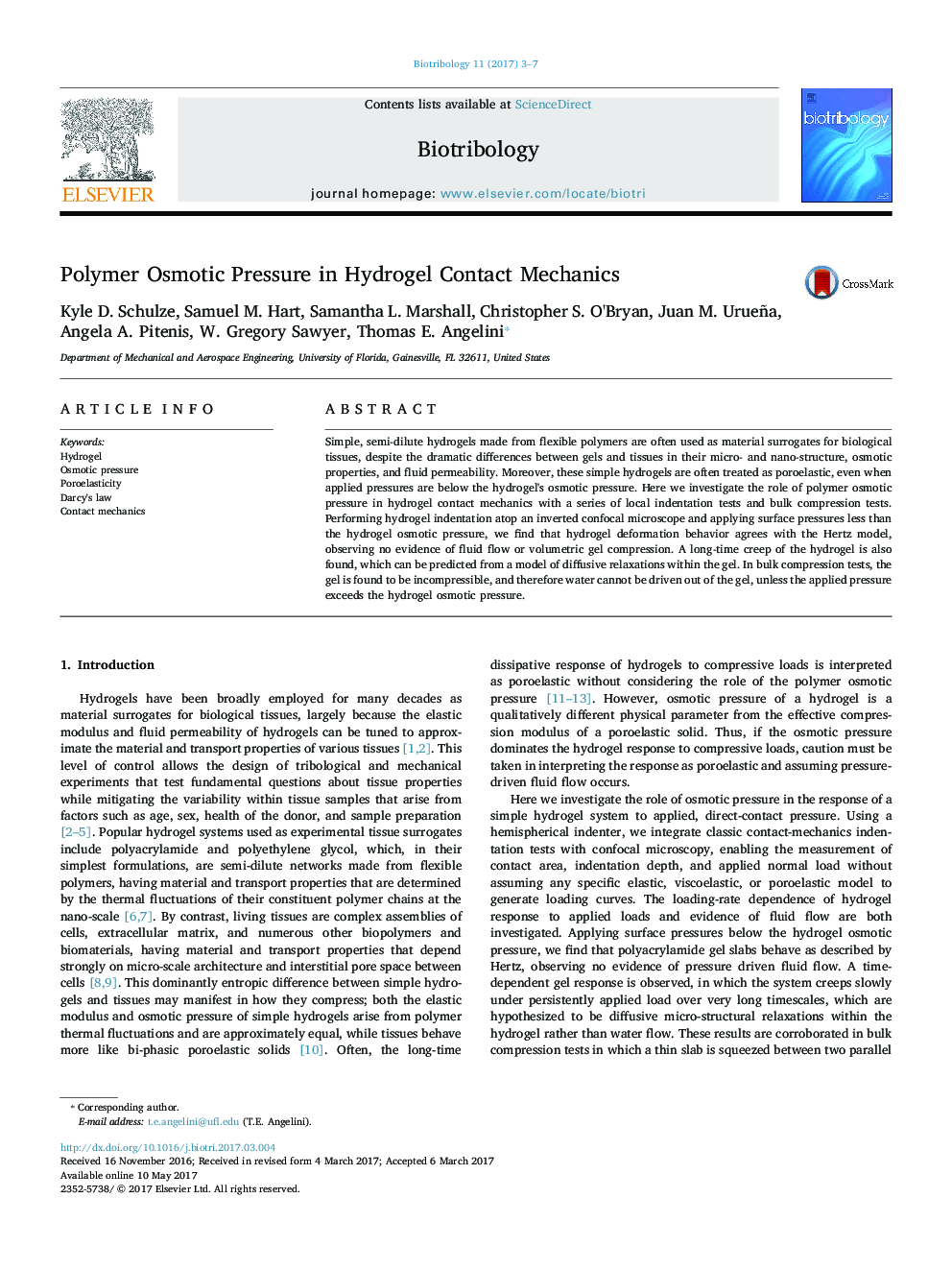| Article ID | Journal | Published Year | Pages | File Type |
|---|---|---|---|---|
| 5011121 | Biotribology | 2017 | 5 Pages |
â¢Hydrogels behave in accordance with Hertz's contact theory.â¢There is no evidence of volumetric compression of polymer under persistent load.â¢Diffusive restructuring of hydrogels appear to be driving long-time relaxations in hydrogels.â¢Hydrogels cannot be compressed unless their osmotic pressure is exceeded.
Simple, semi-dilute hydrogels made from flexible polymers are often used as material surrogates for biological tissues, despite the dramatic differences between gels and tissues in their micro- and nano-structure, osmotic properties, and fluid permeability. Moreover, these simple hydrogels are often treated as poroelastic, even when applied pressures are below the hydrogel's osmotic pressure. Here we investigate the role of polymer osmotic pressure in hydrogel contact mechanics with a series of local indentation tests and bulk compression tests. Performing hydrogel indentation atop an inverted confocal microscope and applying surface pressures less than the hydrogel osmotic pressure, we find that hydrogel deformation behavior agrees with the Hertz model, observing no evidence of fluid flow or volumetric gel compression. A long-time creep of the hydrogel is also found, which can be predicted from a model of diffusive relaxations within the gel. In bulk compression tests, the gel is found to be incompressible, and therefore water cannot be driven out of the gel, unless the applied pressure exceeds the hydrogel osmotic pressure.
